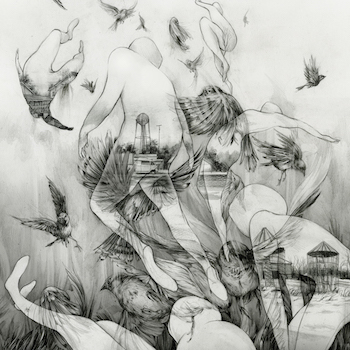The most difficult part about writing anything about a post-rock band is that each song is such a journey, and the albums seem to be massive offerings. It’s more about the journey than it is about the little pieces that make them up. Mono, throughout “The Last Dawn” manages to weave together extended sections of tranquility with blasts of euphoric noise. The slow unfolding of each track (as is usually the case) relies on short repetitive melodies that are built up in every way possible. This, of course, is not exactly out of the ordinary. Post-rock tends toward the slow-burn, slowly blending in element after element until the full fabric is complete. It’s a lot easier said than done.
There are many moments on “The Last Dawn” that sound close to Explosions in the Sky’s treatment of guitar, with open string voiced chord extensions are carefully articulated. Mono makes extensive use of a piano as a complement to the quieter guitar parts.
What it all really boils down to is a series of beautiful moments. Specifically, the moments of martial drumbeats and roaring guitars strummed wildly. After so much waiting and placidity, once the album really opens up, and it does so at only a few key moments (which isn’t to say that it should happen more often. On the contrary, the pacing is maybe the most important thing to listen to here), it’s something that gives the listener pause. Those moments are made all the more explosive and awe inspiring in that Mono has made you wait for them. As much as “The Last Dawn” is a collection of songs, it really is more about the journey across the entire album.
And the journey doesn’t end with “The Last Dawn,” the album was recorded simultaneously with their other new release “Rays of Darkness.” The albums are counterparts, but aren’t to be thought of as the same entity. “Rays of Darkness” stands in near opposition to the hopeful, sometimes joyous nature of “The Last Dawn.” Both of these albums are currently available on LP and CD through Temporary Residence Ltd.



